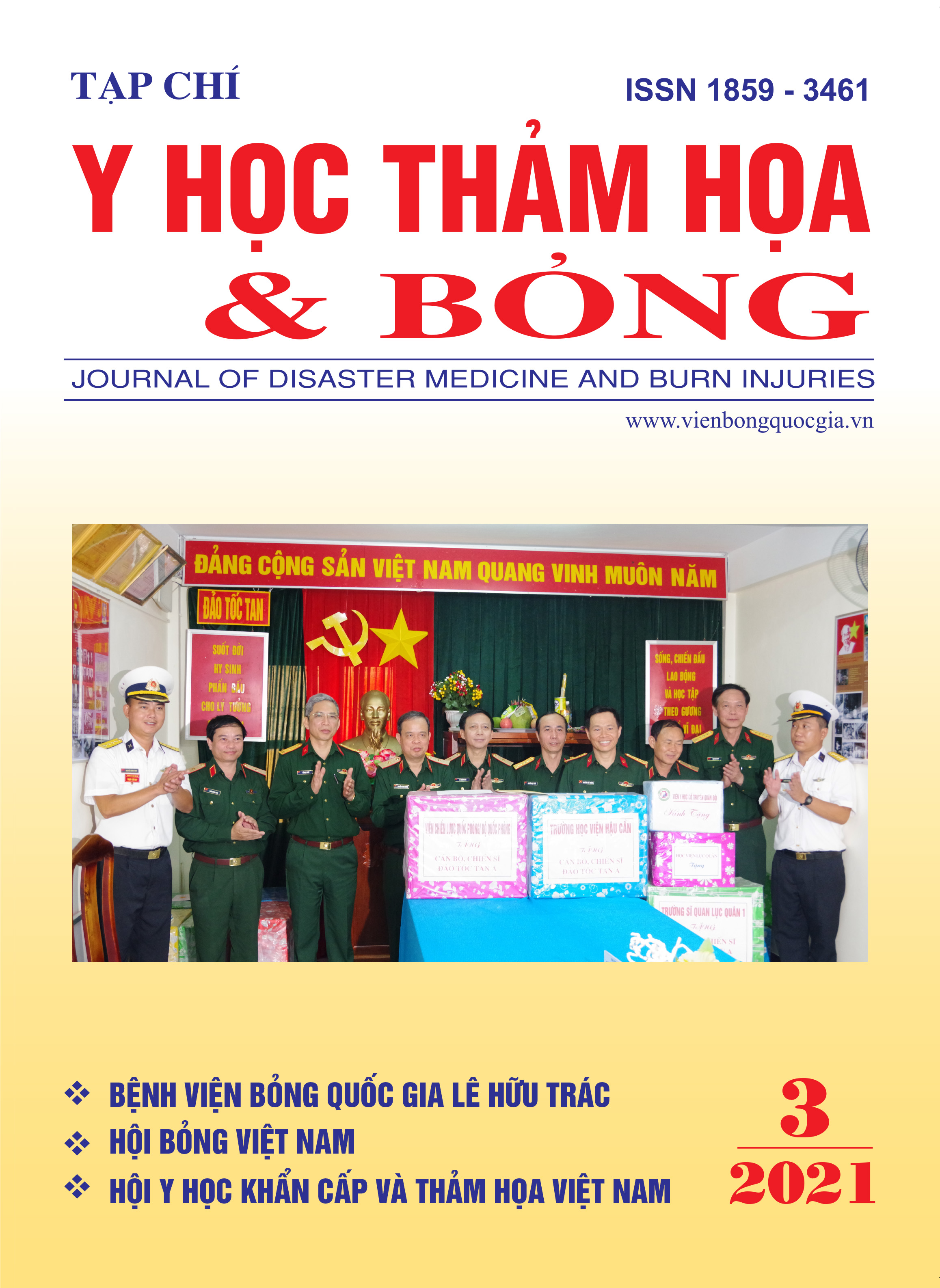Study some epidemiological, clinical characteristics and treatment outcomes in electric burn pediatric patients were hospitalized at the Le Huu Trac National Burn Hospital from 2017 to 2019
Main Article Content
Abstract
Aims: This study aims to comment on some epidemiological, clinical characteristics and treatment outcomes in electric burn patients aged up to sixteen years who were hospitalized at the Le Huu Trac National Burn Hospital from 2017 to 2019.
Materials and methods: Retrospective, statistical and descriptive research based on medical records of burn patients from January of 2017 to December of 2019 at Le Huu Trac National Burn Hospital.
Results: 167 under-16-year-old electrical burn patients were hospitalized in Le Huu Trac National Burn Hospital from 2017 to 2019.
The main cause was low-voltage burns 89.8%; common in rural areas (86.2%) and male pediatric patients (76.6%). The age group that often encounters high-voltage electrical burns is over 10 years old (85%), while children under-6-year-old often suffer from low-voltage burns (65.35%). Compared with the group of patients with low voltage burns, it was found that the group of patients with high voltage burns had a higher rate of burn shock than p = 0.000000, larger burn area, larger depth of burn area, more surgeries, longer hospital stay (p = 0.00000).
The rate of amputation and dissection of pediatric patients with electrical burns was 15.56% and no patient died during treatment.
Conclusion: Electrical burns in children are a common emergency, the treatment results at the National Burn Hospital give good results with 100% being cured and discharged from the hospital.
Article Details
Keywords
Electrical burns, children under-16-year-old, đặc điểm dịch tễ
References
2. Roberts S., Meltzer J. A. (2013) An evidence based approach to electrical injuries in children. Pediatric emergency medicine practice, 10 (9),1-16; quiz 16.
3. Rai A., Khalil S., Batra P.et al. (2013) Electrical injuries in urban children in New Delhi. Pediatric emergency care, 29 (3), 342-345.
4. Glatstein M. M., Ayalon I., Miller E.et al. (2013) Pediatric electrical burn injuries: experience of a large tertiary care hospital and a review of electrical injury. Pediatric emergency care, 29(6), 737-740.
5. Çelik A., Ergün O., Özok G. (2004) Pediatric electrical injuries: a review of 38 consecutive patients. Journal of pediatric surgery, 39 (8),1233-1237.
6. Patil S. B., Khare N. A., Jaiswal S.et al. (2010) Changing patterns in electrical burn injuries in a developing country: should prevention programs focus on the rural population? Journal of burn care & research, 31 (6), 931-934.
7. Nguyễn Ngọc Tuấn (2016) Bỏng điện. Bỏng -Giáo trình sau đại học, Nhà xuất bản y học, Hà Nội, 344 – 356


